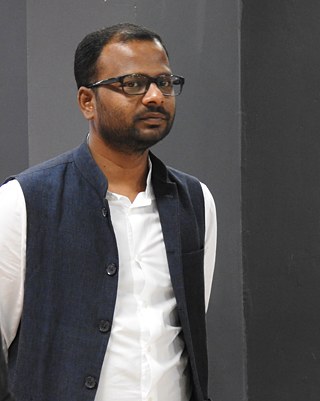Jeevan Xavier
bangaloRExpanded-Resident@Zentralwerk

Der überzeugte Künstler lässt seine Themen über das Medium der Arbeit entscheiden. Die Themen entwickeln sich aus den Auswirkungen seiner persönlichen Begegnungen mit sozialen Konflikten. Er bringt die Konflikte durch seine Arbeit zurück in die Öffentlichkeit, um Gespräche anzustoßen. Somit ist seine künstlerische Praxis ein Weg, sich mit der Gesellschaft im Großen und Ganzen zu verbinden.Seine Arbeit steht daher nicht allein, er sieht sie als einen abstrakten Gesprächspunkt. Menschen und Folklore sind weitere Interessengebiete, die sich, sowie Jahrzehnte lange industrielle Erfahrung, in seiner Arbeit widerspiegeln. Ebenso faszinieren ihn in seiner künstlerischen Praxis die Widersprüche im Verhalten und der Dynamik menschlicher Interaktion.
Jeevan Xavier studierte Textil- und Modedesign, bevor er 1999 seine Karriere in der Textilindustrie begann. Er arbeitete bei zwei großen Textilunternehmen in Indien in leitenden Positionen und leitete Teams aus Designer*innen, Künstler*innen und Techniker*innen. In den letzten zwanzig Jahren hat er Produkte für viele Marken in Europa, Nordamerika, Asien und Australien entwickelt. Er hat auch Workshops teilgenommen, die von den abstrakten Malern Tricia Gilman und Rod Judkin über Kunst und kreative Problemlösung durchgeführt wurden. Derzeit leitet er eine Firma in Bangalore, JLX Studio; unter diesem Namen engagiert er sich neben seinen Design- und Kunstprojekten auch in neuen Forschungsprojekten zum Thema Folklore und traditionellen, indischen Design in Südindien.
Während seiner Zeit Zentralwerk Dresden wird er sich mit einen Kunstwerk auseinander setzen, bei welchem er sich mit den ideologischen Unterschieden des Einzelnen in unserem täglichen Leben zwischen Partner*innen, Familienmitgliedern, Freunden, Nachbar*innen und Kolleg*innen befasst.


